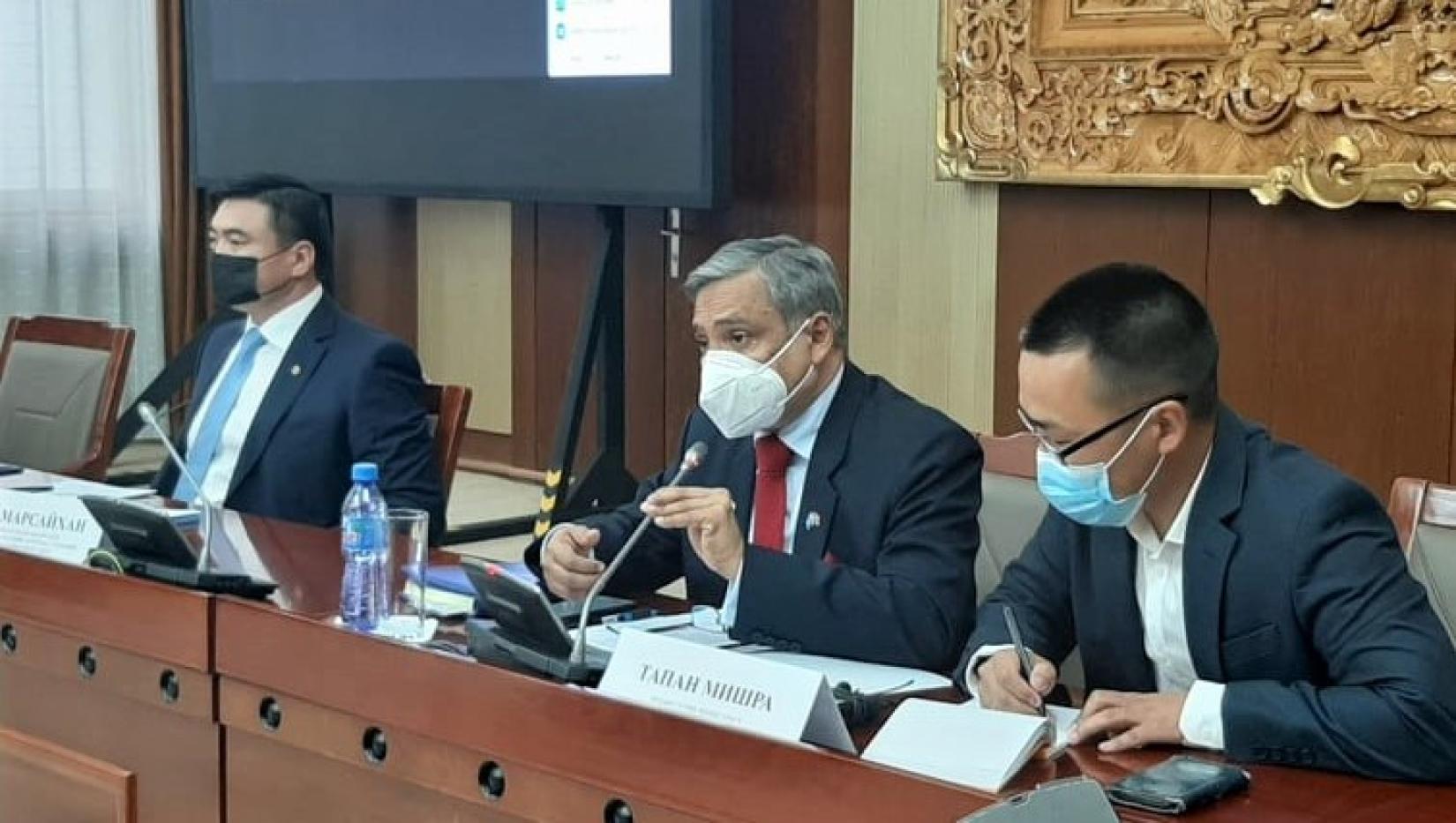Mongolia’s National Council on Disaster Risk Reduction convened
27 July 2021
Ulaanbaatar, 26 July 2021 – Chaired by Deputy Prime Minister H.E S. Amarsaikhan, Mongolia’s key stakeholders convened today to discuss the national action plan for prevention and preparedness for nature and man-made disasters at the Second Meeting of the National Council of the Disaster Risk Reduction (DRR).

Ulaanbaatar – Chaired by Deputy Prime Minister H.E S. Amarsaikhan, Mongolia’s key stakeholders convened today to discuss the national action plan for prevention and preparedness for natural and man-made disasters at the Second Meeting of the National Council of the Disaster Risk Reduction (DRR).
Key priority consultations were held around the following topics:
- Activities implemented by the National Council following the adoption of Recommendation of the National Council as of the first half of 2021.
- Long term strategies to cope with Covid-19 as well as response and risk reduction.
- Opportunities in reducing the risk of weather-driven hazards such as flooding risk in the infrastructure sector.
- Opportunities for establishing Risk/Contingency Fund for disaster risk reduction.
- Emerging earthquake and seismic disasters and existing gaps and opportunities to cope with sudden on-set disasters.
The UN Resident Coordinator, Tapan Mishra delivered opening remarks at the meeting. Mr. Mishra emphasized the importance of the prevention of any disasters, if and when possible, which would be the most important and useful step in disaster risk reduction. He highlighted, if not possible to prevent, we need to be well planned and enhance preparedness for all forms of possible disasters to mitigate further risks and ensure early recovery to reduce the impacts of disasters to a minimum.
Mongolia is prone to many types of disasters, including droughts, dzuds, floods, snow and sand blizzards, infectious diseases among humans and animals, earthquakes and soil erosions, etc. According to the Deputy Prime Minister, Mongolia has experienced a 67.9 per cent increase in weather and climate-related disasters and hazards in the last 15 years, and the death toll has increased by 37.5 per cent, reaching 248 in 2020 from 180 in 2005. In 2020 alone, fires accounted for 79.3 per cent of all disasters while 13.6 per cent were human-induced disasters.
Mongolia experienced more than 240 earthquakes of magnitude 3.5 or above have been recorded in the first half of 2021. For example, in January 2021, there were 8 times earthquakes of a magnitude of 4.6-6.5 in Khankh soum, Khuvsgul aimag.
In the last two years, Mongolia grappled with the COVID-19 pandemic, which has made an enormous impact on the public health and socio-economic situation of the country. Minister for Health, Mr. S. Enkhbold emphasized that the successful nationwide vaccination campaign has prevented a further surge in the death tolls of the COVID-19 patients. To date, Mongolia has recorded 157,986 cases of COVID-19 and 782 deaths.
The National Council on Disaster Risk Reduction has reviewed the activities related to disaster risk reduction, prevention and mitigation in the first half of 2021, and discussed further steps and actions to reduce the risks of weather-driven hazards such as flooding risk in the infrastructure sector. The council members discussed an opportunity to establish a Risk/Contingency Fund for disaster risk reduction in order to deal with the sudden onset disasters and also approved recommendations in the five areas discussed.




